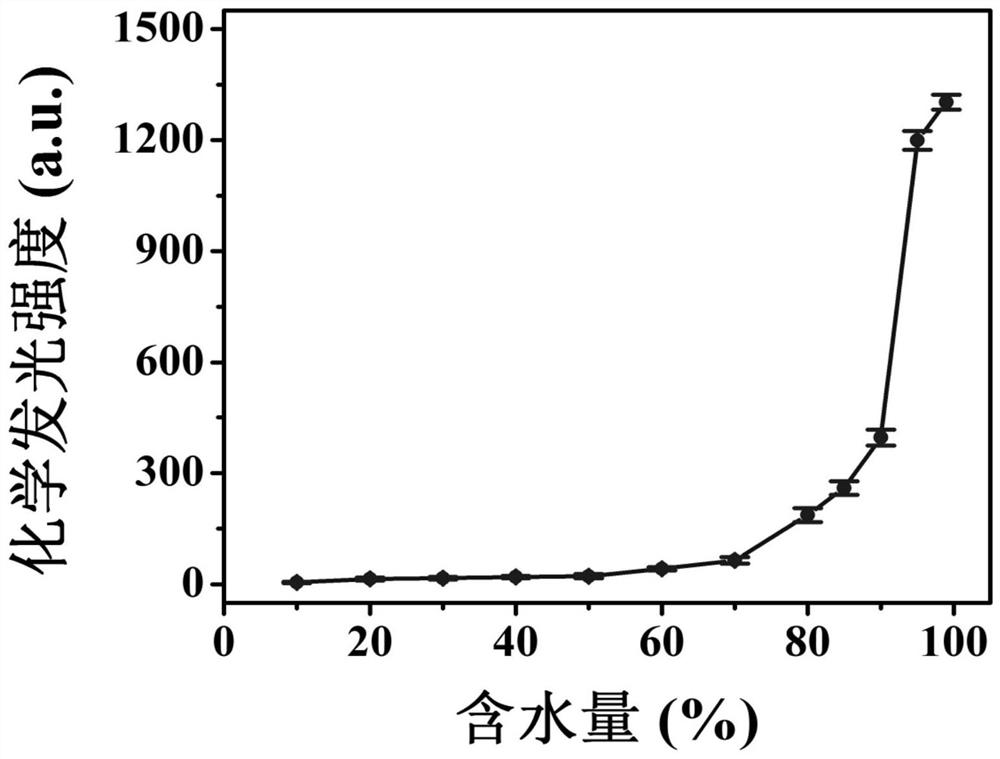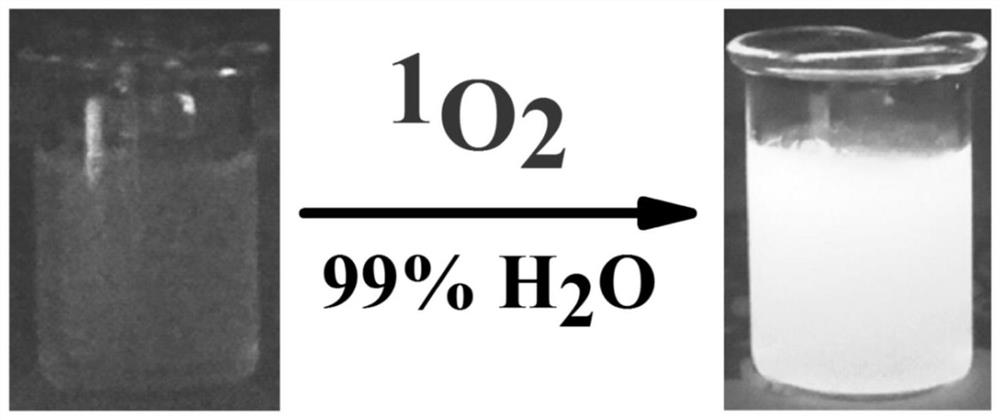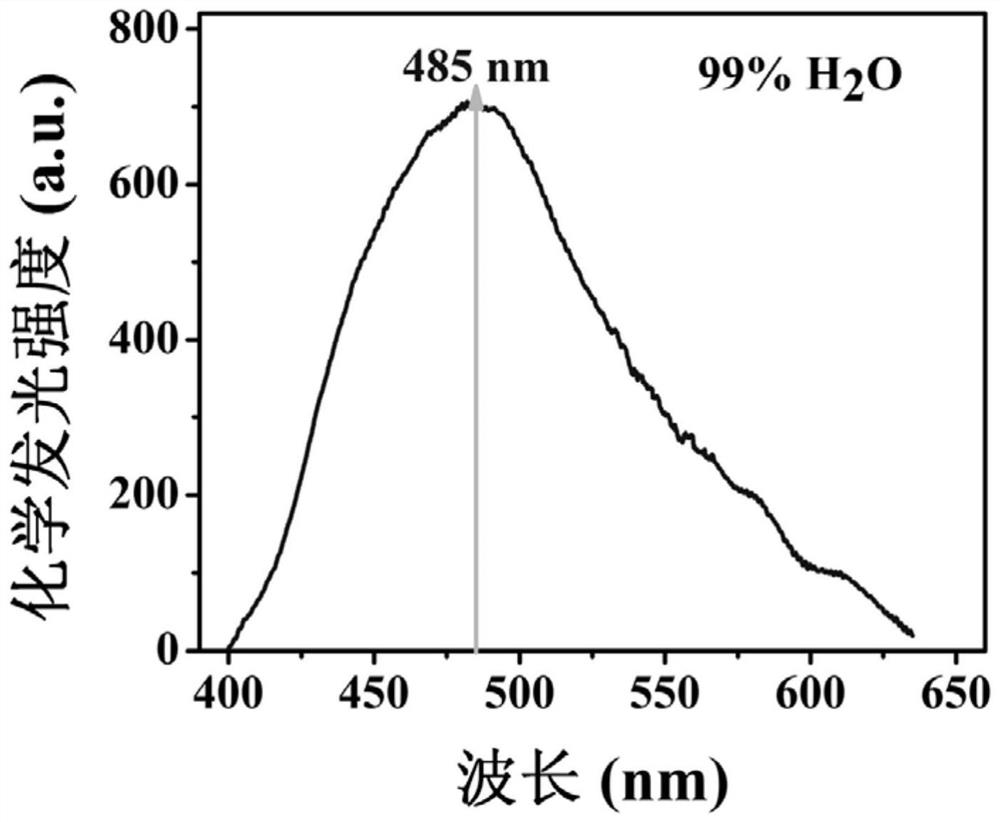A highly selective aggregation-induced chemiluminescent probe for singlet oxygen, its preparation method and application
A chemiluminescence, aggregation-induced technology, applied in chemical instruments and methods, organic chemistry, luminescent materials, etc., can solve the problems of low body content and short singlet oxygen life, achieve high selectivity, and ensure the effect of energy transfer efficiency
- Summary
- Abstract
- Description
- Claims
- Application Information
AI Technical Summary
Problems solved by technology
Method used
Image
Examples
Embodiment 1
[0031] 1. Add 10.09g (0.06mol) of diphenylmethane (0.06mol) and 250mL of dry tetrahydrofuran into a 500mL three-necked flask, vacuum replace, cool to 0°C, keep stirring, and slowly add 24.0mL2.5mol into the mixture with a syringe under nitrogen protection. / L (0.06mol) cyclohexane solution of n-butyllithium, continue to stir for 30min after adding, then add 40mL of dry tetrahydrofuran solution containing 15.14g (0.058mol) 4-bromobenzophenone dropwise, at room temperature Stir for 10 h, then add ammonium chloride aqueous solution to the reaction mixture to stop the reaction, extract with dichloromethane (300 mL x 3 times), combine the organic phases, and wash alternately with saturated sodium chloride aqueous solution and deionized water (300 mL x 3 times) , and then dried with anhydrous magnesium sulfate, filtered, and the solvent was evaporated to obtain the intermediate 2-(4-bromophenyl)-1,1,2-triphenylethanol. The obtained intermediate and 1.0 g of anhydrous p-toluenesulfon...
PUM
 Login to View More
Login to View More Abstract
Description
Claims
Application Information
 Login to View More
Login to View More - R&D
- Intellectual Property
- Life Sciences
- Materials
- Tech Scout
- Unparalleled Data Quality
- Higher Quality Content
- 60% Fewer Hallucinations
Browse by: Latest US Patents, China's latest patents, Technical Efficacy Thesaurus, Application Domain, Technology Topic, Popular Technical Reports.
© 2025 PatSnap. All rights reserved.Legal|Privacy policy|Modern Slavery Act Transparency Statement|Sitemap|About US| Contact US: help@patsnap.com



